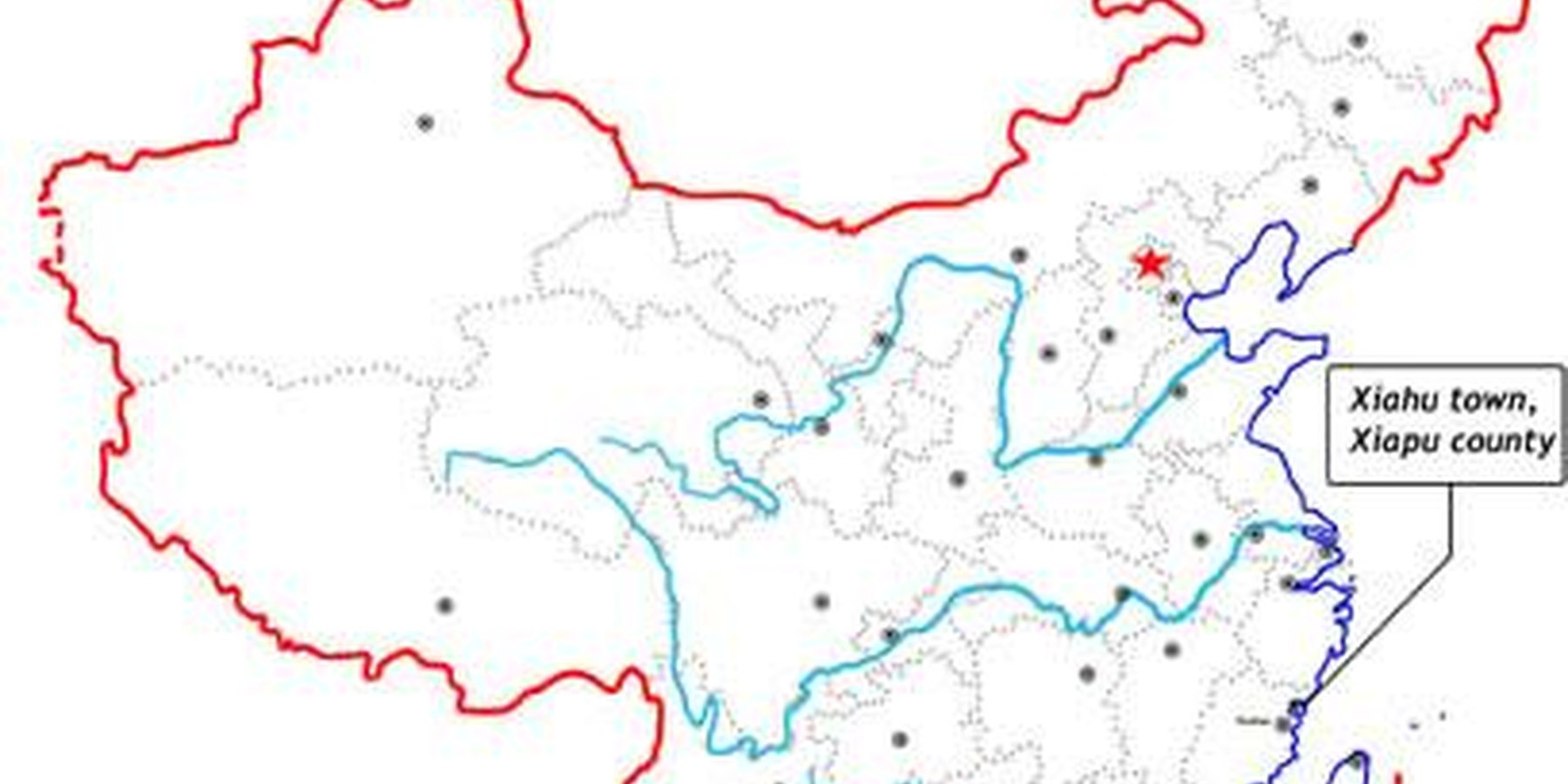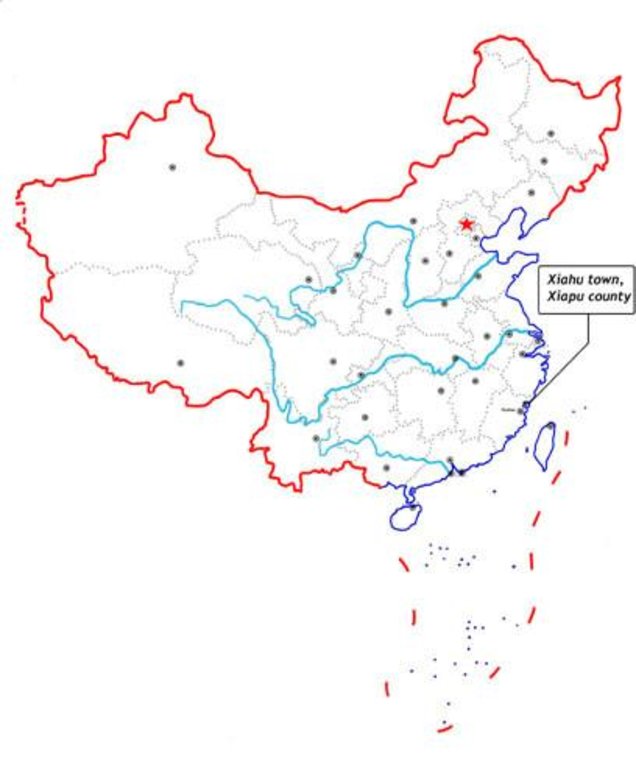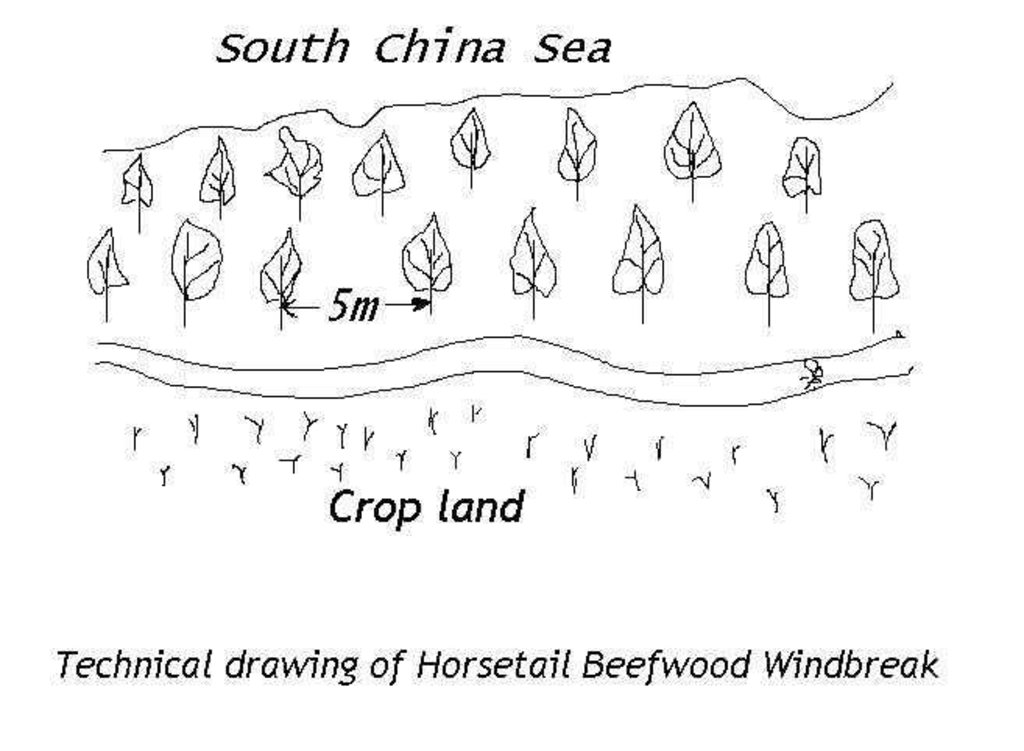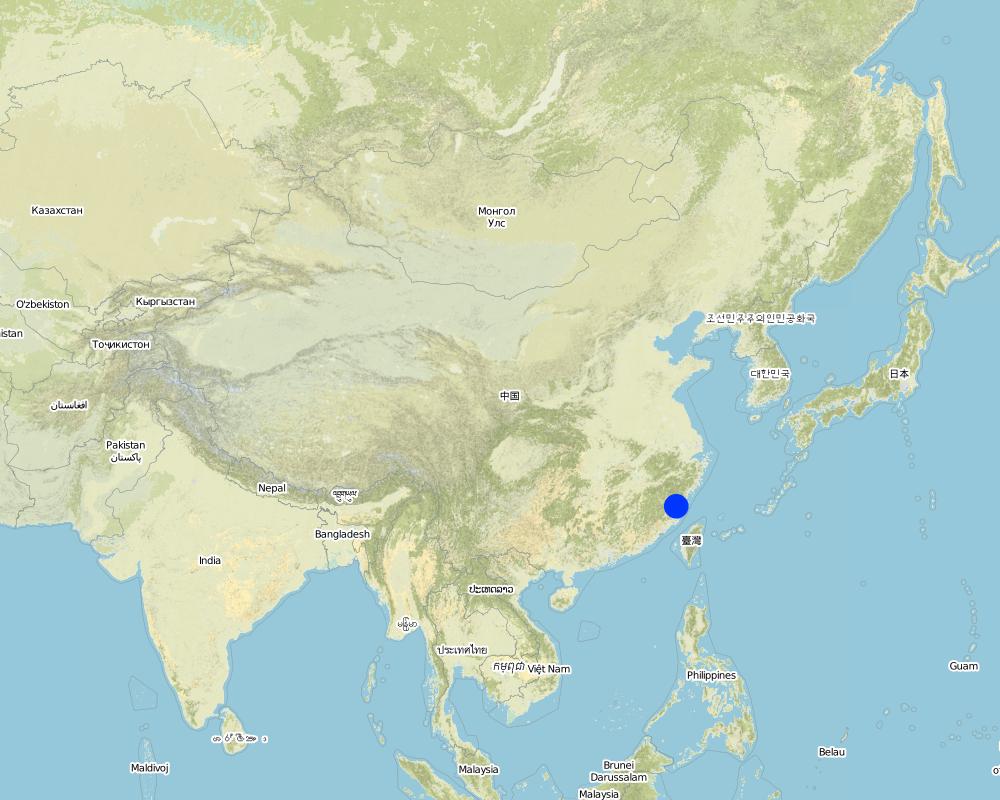Planting Horsetail Beefwood (Casuarina) As Windbreak Along Seaside [China]
- Creation:
- Update:
- Compiler: Unknown User
- Editor: –
- Reviewer: Laura Ebneter
approaches_2557 - China
View sections
Expand all Collapse all1. General information
1.2 Contact details of resource persons and institutions involved in the assessment and documentation of the Approach
Key resource person(s)
SLM specialist:
Gong Hengwen
86-593-2821623
Ningde Prefecture Soil & Water Conservation Office
No. 14, Shuqian Road, Ningde352100, Fujian
China
Name of the institution(s) which facilitated the documentation/ evaluation of the Approach (if relevant)
Soil & Water Conservation Office, Ningde Prefecture - China1.3 Conditions regarding the use of data documented through WOCAT
The compiler and key resource person(s) accept the conditions regarding the use of data documented through WOCAT:
Ja
1.4 Reference(s) to Questionnaire(s) on SLM Technologies

Horsetail Beefwood (Casuarina) Windbreak along Seaside [China]
Planting Horsetail Beefwood as a shelter belt along seaside to prevent serious wind and water erosion/destroy of the cropland.
- Compiler: Unknown User
2. Description of the SLM Approach
2.1 Short description of the Approach
Planting Horsetail Beefwood along seaside to protect cropland from sea wind erosion and typhoon destroy.
2.2 Detailed description of the Approach
Detailed description of the Approach:
Planting Horsetail Beefwood as shelter belts along seaside to prevent Strong wind and water erosion/destroy on the cropland. Horsetail Beefwood is a perennial tree growing in sub-tropic and tropic climate. Its timber can be used in industry and fuel timber. It is easy to maintain and accepted by land users.
2.3 Photos of the Approach
2.5 Country/ region/ locations where the Approach has been applied
Country:
China
Region/ State/ Province:
Fujian
Map
×2.6 Dates of initiation and termination of the Approach
Indicate year of initiation:
1992
Year of termination (if Approach is no longer applied):
2002
2.7 Type of Approach
- project/ programme based
2.8 Main aims/ objectives of the Approach
The SLM Approach addressed the following problems: Strong sea wind and typhoon destroy the farmland and the serious erosion makes soil layer thin. The crops are often blown away and yield is decreasing gradually.
2.9 Conditions enabling or hindering implementation of the Technology/ Technologies applied under the Approach
availability/ access to financial resources and services
- hindering
Lack of fund to buy tree species and pay labour fee
Treatment through the SLM Approach: Raising money through variable ways and subsidy from government
legal framework (land tenure, land and water use rights)
- hindering
The existing land ownership, land use rights / water rights hindered a little the approach implementation The land ownership belongs to state and land user can only lease the land for a period of time, land users would worry about their land could be transferred to others.
knowledge about SLM, access to technical support
- hindering
Poor knowledge in SWC
Treatment through the SLM Approach: Enhancing trainning
3. Participation and roles of stakeholders involved
3.1 Stakeholders involved in the Approach and their roles
- local land users/ local communities
Working land users were mainly men (Men are the main labor for the SWC implementation.)
- national government (planners, decision-makers)
3.2 Involvement of local land users/ local communities in the different phases of the Approach
| Involvement of local land users/ local communities | Specify who was involved and describe activities | |
|---|---|---|
| initiation/ motivation | passive | |
| planning | passive | |
| implementation | interactive | responsibility for major steps |
| monitoring/ evaluation | external support | interviews/questionnaires; |
| Research | none |
3.4 Decision-making on the selection of SLM Technology/ Technologies
Specify who decided on the selection of the Technology/ Technologies to be implemented:
- mainly SLM specialists, following consultation with land users
Explain:
Decisions on the method of implementing the SLM Technology were made by mainly by land users supported by SLM specialists
4. Technical support, capacity building, and knowledge management
4.1 Capacity building/ training
Was training provided to land users/ other stakeholders?
Ja
Specify who was trained:
- land users
Form of training:
- demonstration areas
Form of training:
- farm visits
Subjects covered:
Demonstration in the field.
4.2 Advisory service
Do land users have access to an advisory service?
Ja
Specify whether advisory service is provided:
- on land users' fields
Describe/ comments:
Name of method used for advisory service: Demonstration of planting horsetail beefwood; Key elements: Size between trees, maintain; 1) Advisory service was carried out through: projects own extension structure and agents 2) Advisory service was carried out through: projects own extension structure and agents; Extension staff: mainly government employees 3) Target groups for extension: land users; Activities: Demonstration
Advisory service is quite adequate to ensure the continuation of land conservation activities; Propaganda, soil conservation, extension and SWC benefits can lure land users to participate in the project.
4.3 Institution strengthening (organizational development)
Have institutions been established or strengthened through the Approach?
- no
4.4 Monitoring and evaluation
Is monitoring and evaluation part of the Approach?
Ja
Comments:
economic / production aspects were regular monitored through measurements
area treated aspects were ad hoc monitored through observations
There were few changes in the Approach as a result of monitoring and evaluation
4.5 Research
Was research part of the Approach?
Ja
Give further details and indicate who did the research:
Research was carried out both on station and on-farm
5. Financing and external material support
5.1 Annual budget for the SLM component of the Approach
If precise annual budget is not known, indicate range:
- 2,000-10,000
Comments (e.g. main sources of funding/ major donors):
Approach costs were met by the following donors: government (national): 80.0%; other (-): 20.0%
5.2 Financial/ material support provided to land users
Did land users receive financial/ material support for implementing the Technology/ Technologies?
Ja
5.3 Subsidies for specific inputs (including labour)
- agricultural
| Specify which inputs were subsidised | To which extent | Specify subsidies |
|---|---|---|
| seeds | fully financed | seedlings |
If labour by land users was a substantial input, was it:
- voluntary
Comments:
It is managed by administrative way, land users' input are mainly voluntary with subsidy paid in cash.
5.4 Credit
Was credit provided under the Approach for SLM activities?
Nee
6. Impact analysis and concluding statements
6.1 Impacts of the Approach
Did the Approach help land users to implement and maintain SLM Technologies?
- No
- Yes, little
- Yes, moderately
- Yes, greatly
The local farmers change their traditional food crops to economic crops and/or fruit trees.
Did the Approach improve issues of land tenure/ user rights that hindered implementation of SLM Technologies?
- No
- Yes, little
- Yes, moderately
- Yes, greatly
National or local government can deal with this issue. The problem is likely to be overcome in the near future. Through giving some subsidy and other favorable policies.
Did other land users / projects adopt the Approach?
- No
- Yes, little
- Yes, moderately
- Yes, greatly
6.3 Sustainability of Approach activities
Can the land users sustain what has been implemented through the Approach (without external support)?
- yes
6.4 Strengths/ advantages of the Approach
| Strengths/ advantages/ opportunities in the land user’s view |
|---|
| Reducing wind erosion and improving soil fertility so that increasing production and gaining better benefits. (How to sustain/ enhance this strength: It is unnecessary to spend much labor & money to maintain since it can produce better benefits and improve environment.) |
| Strengths/ advantages/ opportunities in the compiler’s or other key resource person’s view |
|---|
| improving the ecological environment and economic benefits (How to sustain/ enhance this strength: Forbidding disafforest.) |
6.5 Weaknesses/ disadvantages of the Approach and ways of overcoming them
| Weaknesses/ disadvantages/ risks in the land user’s view | How can they be overcome? |
|---|---|
| Input from the government is too little, and some land users do not really realize the importance of SWC. | strengthening propaganda of the importance of SWC, to get more funds from different channels. |
| Weaknesses/ disadvantages/ risks in the compiler’s or other key resource person’s view | How can they be overcome? |
|---|---|
| no |
7. References and links
7.1 Methods/ sources of information
- field visits, field surveys
- interviews with land users
Links and modules
Expand all Collapse allLinks

Horsetail Beefwood (Casuarina) Windbreak along Seaside [China]
Planting Horsetail Beefwood as a shelter belt along seaside to prevent serious wind and water erosion/destroy of the cropland.
- Compiler: Unknown User
Modules
No modules





